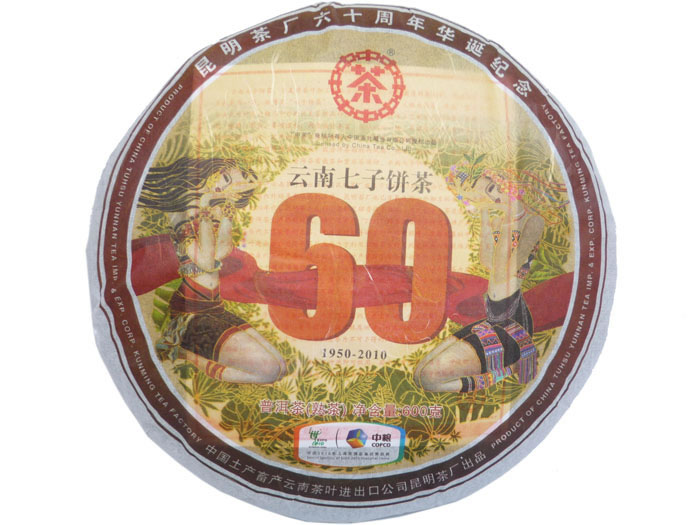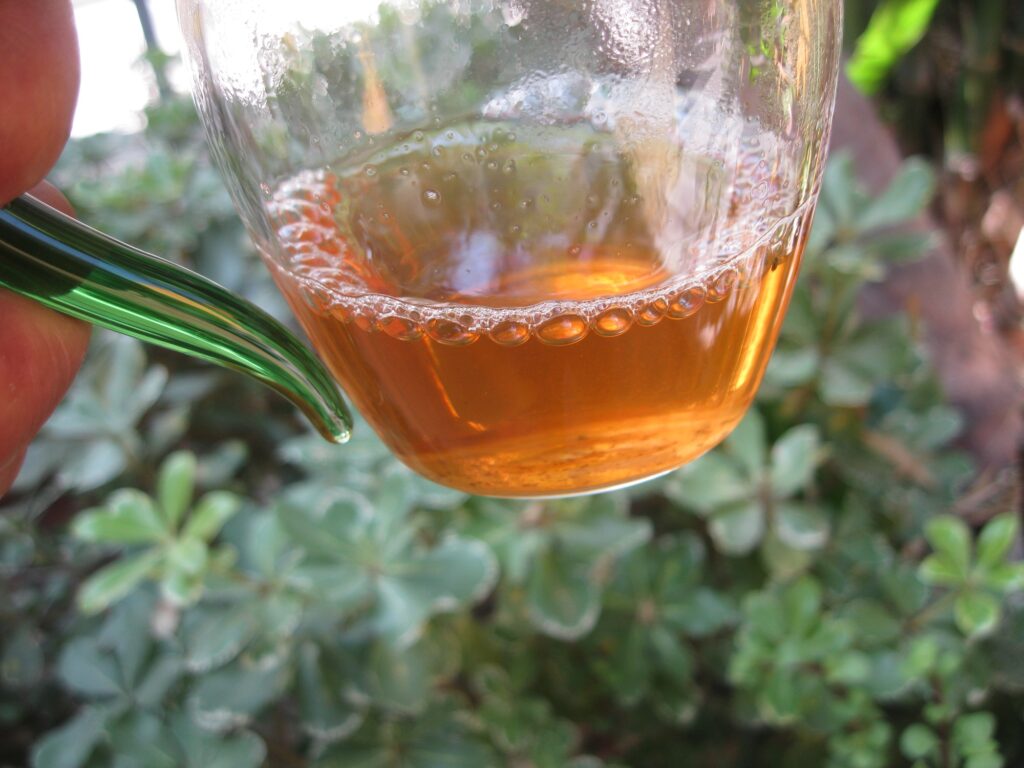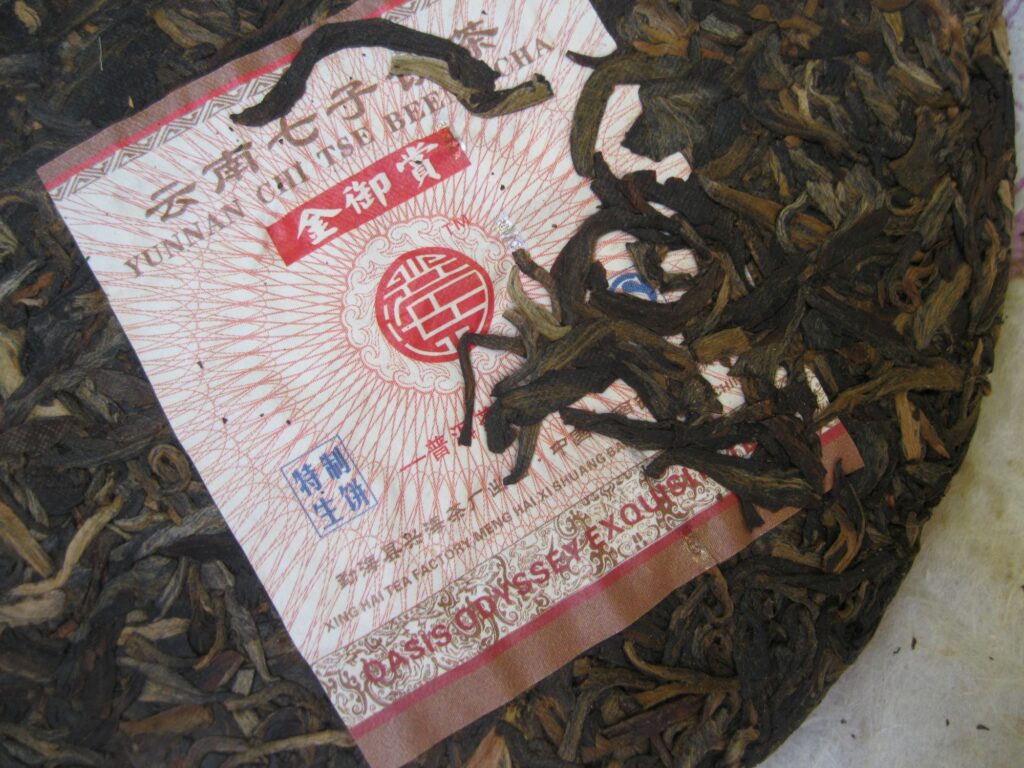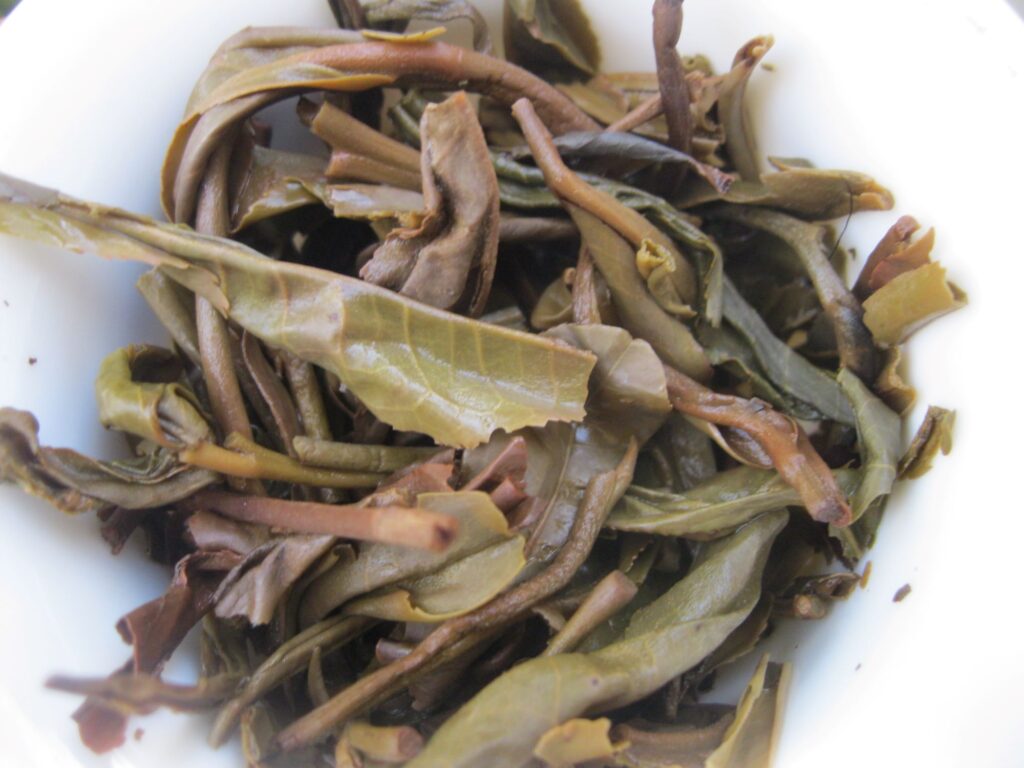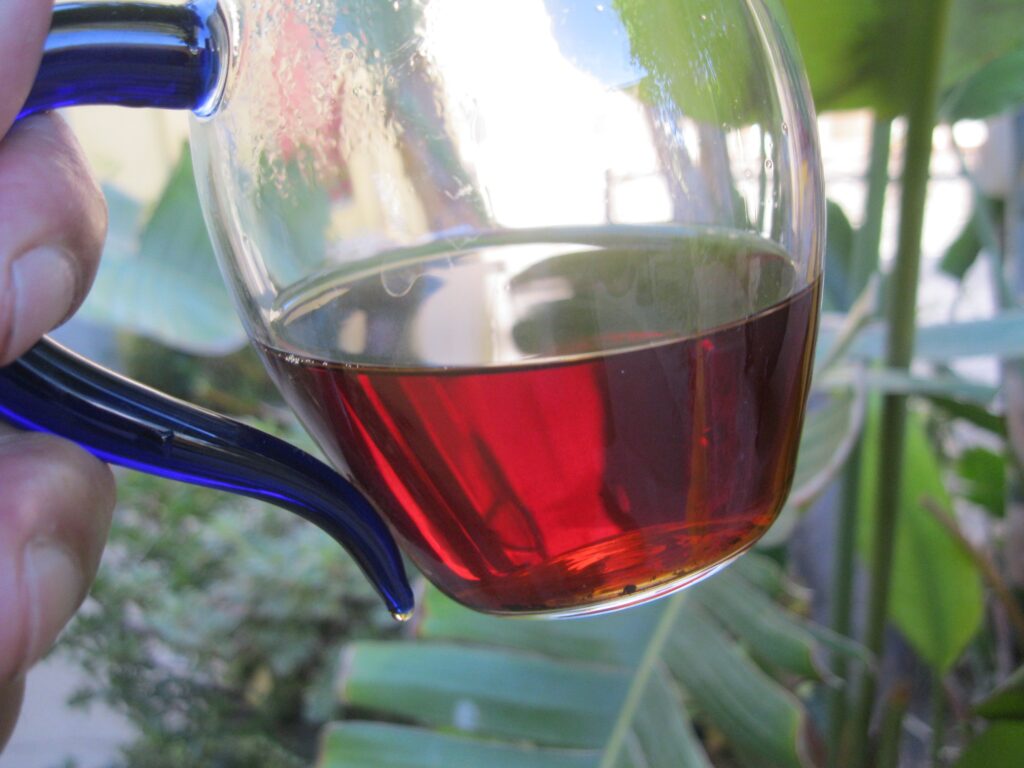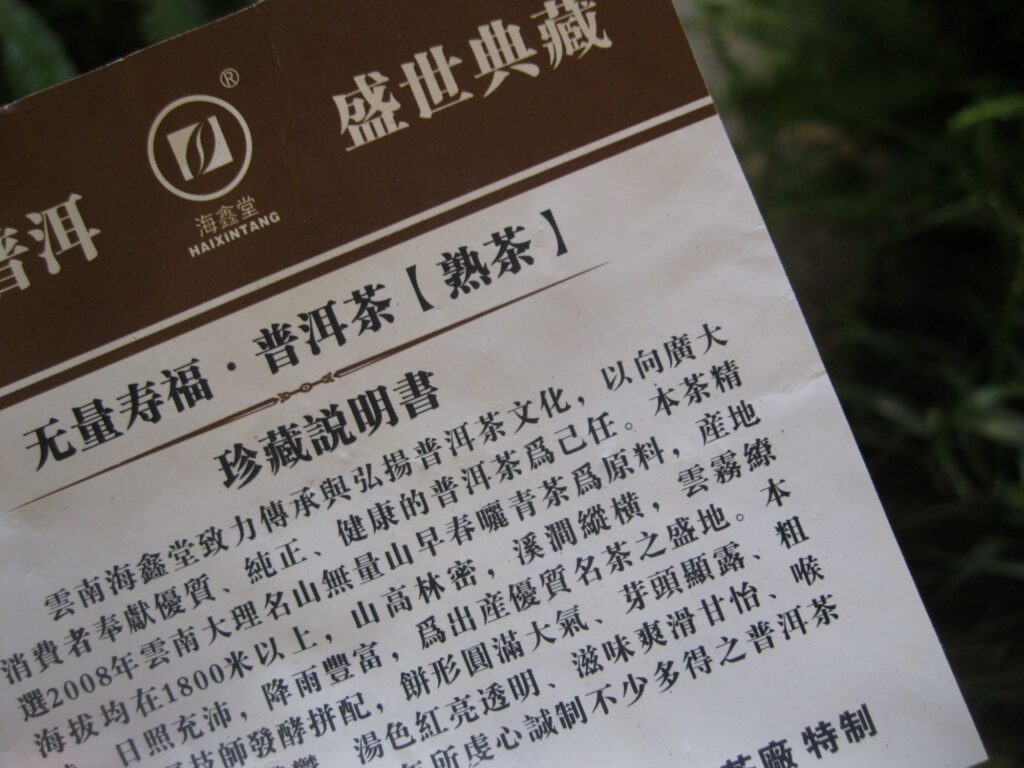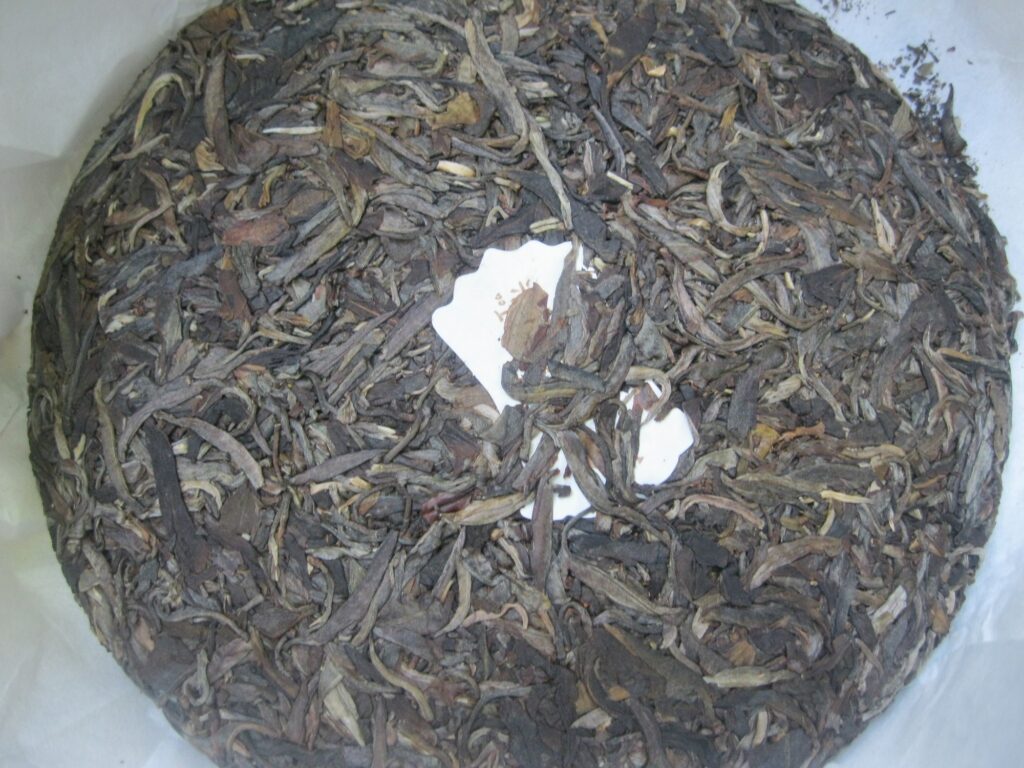Sound the Zhongcha Trumpets
4 May 2024 will forever be remembered as the day to Sound the Zhongcha Trumpets! It has to do with the 600g ripe commemorative acquired around Christmas ’14. The pic is above. The reason for the trumpet sounding? This monstrosity has finally come into form!
Just last year I thought to myself, “maybe it’s really just a lame offering that’ll never amount to much.” The difference a few months can make. My feeling about ZC’s Purple Sky is quite similar, though by now I should know better. There’s a prevailing perception that ripes do not require aging. It’s imprudent to make such a sweeping generalisation, as factors vary greatly from one production and batch to the next depending upon the conception of the maker. ZC is probably most notorious for this, realistically providing an absolute max of five recipes but executing varying permutations of material quality, processing, and fermentation to derive “new” productions. As the saying goes, “if it ain’t broke. . . ”
The 60 has been tested religiously since its acquisition. Less than 100g remain. Every session till today has been “myeh”. Some people like a dry brew, but dryness is an indication that the production hasn’t matured. If the “55” serves as any basis for comparison, it seems even some of ZC’s raws take about 15 years before rounding into form, i.e., for the sweetness to come in and the tannins to impart richness as opposed to astringency.
A light bulb went off this morning. The aroma is intensely roasty. The brew itself requiring three-stacked infusions to reach the proper ratio of density to sweetness. Such a deep vortex of roast and molasses-esque sweetness is evocative of LCGC and Boyou offerings. Poof! That’s where LCGC gets its “0081.” Duh! LCGC’s ’13 “0081” is scrumptious. It’s their entry-level ripe that will soon be posted. It is to such heights that this 60 has now climbed.
Not to be repetitive but 60 is a “7581,” but not all 7581s are equal. Before delving further, it’s worth noting that 7581 is a standard-bearer among ripes. In fact, it is considered one of the first, if not the first, “perfected” ripe recipe. The “75” indicates the year of production. The “8” indicates the size of the leaf forming the bulk of the recipe. The “1” indicates the factory, Kunming Tea Factory, which since ’07 has been the principle entity holding the iconic Zhongcha (aka ChinaTea) trademark. This recipe constitutes a conceptual tour de force, something now hard to imagine given that most ripes emulate this production style, a style epitomized by having navigated away from attempts at approximating aged puerh and tacking more toward the coffee vibe.
Incidentally, all of the ripe ZC Lunar/Zodiac series are 7581. It’s fair to conjecture that this series provides the best opportunity to compare relatively recent 7581 vintages. It’s certainly sufficient basis for mentioning in an ever-so-blasé manner among fellow tea tyrants, “but you know, the drought of _____ (insert year here) in Menghai really shortens the attack after the third infusion.” Feel free to substitute “flood” for “drought.” Be creative, expositions needn’t be confined to just weather, but could also include religious, political or any other identitarian platitude of one’s choosing; the key is conviction. Be forewarned. The jury is out on just how much puerh prominence one can possibly gain by talking 7581. After all, it’s been crafted very much as being “the people’s” ripe. It’s probably best to start such a conversation by noting thematic inconsistencies in the Zodiac/Lunar wrapper, finish with compression and leave it at that by circling back to talk about HK and Taiwan vendors.
In the past six months, I’ve had the opportunity to visit the ’12 7581 individually boxed brick, part of Ripe Sampler Group #1. I picked up a slew around April ’15. Tracking its transformation has formed the basis for a great education on the nature of ripes in general and the 7581 specifically. Recently (since spring ’23), the brick started to take on some the berry notes often found in Hunan heicha. There’s also a nice blend of creaminess. After so much time, there’s a level of sweetness, roundness, and depth that just cannot be found in either a new or questionably stored brick of the same vintage. Yet satisfying as the brick may be, it is clearly comprised of more modest quality material than either the Snake or 60. . . or maybe it’s just that 2012 was an especially ordinary year.
Material quality does vary between cake, brick, and tuo, but there’s no consistent practice across factories. ZC tends to be most recognized for their bricks, but as stated the ’12 brick doesn’t hold up to Snake nor 60. Curiously, the same year I picked up, unbeknownst to me, the first year Houde was offered. An Instagram associate in HK recently posted some shots of his, so I gave Houde a visit after several-years’ hiatus. Previous sessions where characterized as having a wretched cherry note and the lacking character of immaturity. The recent session was actually quite pleasant, reminding me of that rotund gourmand extraordinaire. Houde comes up because it’s from the same same year as the brick. Houde is classed as an outstanding daily-drinker. Productions from ’12-’16 are nowhere to be found in cake form but there are still some bricks around, which might indicate some batch variation. Houde and the brick are in similar neighborhoods, with the former being slightly more durable. Houde doesn’t approach the Snake or 60 either. Tis time to circle back to 60 for now.
Whenever a treasure comes into form, a little fanfare is in order. When it comes into form and is as good as the 60, then it’s positively time to sound the trumpets. Pondering the finer points of 60 compared to 55 and Snake, both of the annual commemoratives were very tannic. Befuddlement: recipes are highly guarded secrets. At one time I would have said that by appearance alone that 55 was not 7581. Filled with so many gold buds, “55” appears to be something else. . . but for that matter every other 7581 is something else too, so it becomes extremely difficult to make any definitive calls even about what 7581 actually is. The situation is complicated by storage variability, which is of incalculable importance. Still, buds tend to make for a more tannic expression and for this reason alone it’s probably safe to assume that 55 is not 7581. Another thing noticed about the 55 is that the qi seems to be getting more intense with the passing of each year, something not really noticed with the Snake, from which I’ve drunk much more parsimoniously. After only a couple years the Snake appeared promising, in part because it wasn’t particularly tannic yet obviously already quite rich. Frequent drinking would have only proven an indulgence at the expense of sampling productions about which there was less certainty in terms of it maturity and storage stability. By Snake’s fifth year, through the fortune of plenty heat and humidity, a full explosion of petrichor and camphor emerged.
The 60 is victim of fairly stern compression, which in the long run may account for some of its splendor. At 600g, size and compression mutually factor into the rate of transformation. However, my cake has been drunk down to well less than 100g for over five years. Interestingly, the 60 now is already much sweeter than the 55. Blame it on 55‘s bud content. Naturally, not all recipes are crafted with the same sweetness in mind, as the delightful T8371 shows. Conversely, 7581 should be unequivocally sweet and rich, barometers of maturity, storage, and quality. By these measures, 60 has earned its trumpet, having not only become ready but also expressing some of the best that 7581 has to offer.
Recap
Ripes age. The 7581 is a trailblazing ripe recipe, but not really meant to be expensive. Nonetheless vintage, processing, storage, and age variability contributes to considerable variation in price. Fermentation styles of ripes vary. The maturation of 60 comes at year 14 of its evolution, which is roughly about the same amount of time required of 55. Invariably, each offering has its charm. The berry and cream in the ’12 brick stands in contrast to the dense petrichor and camphor of the Snake both have their place. The 60, not for sale, is remarkably similar to the LCGC’s 0081, itself inspired by the ripe paragon, 7581.
Cheers!

